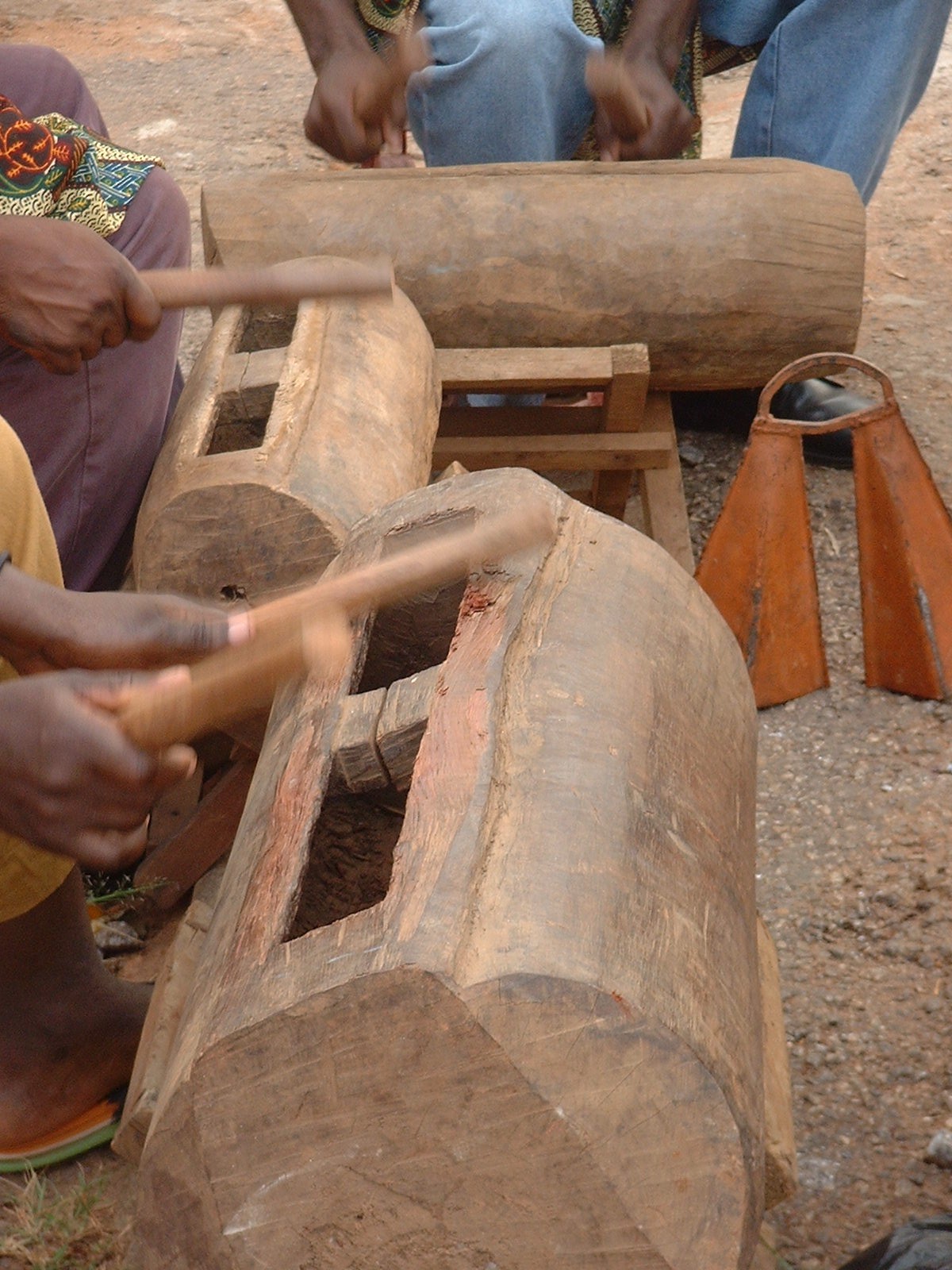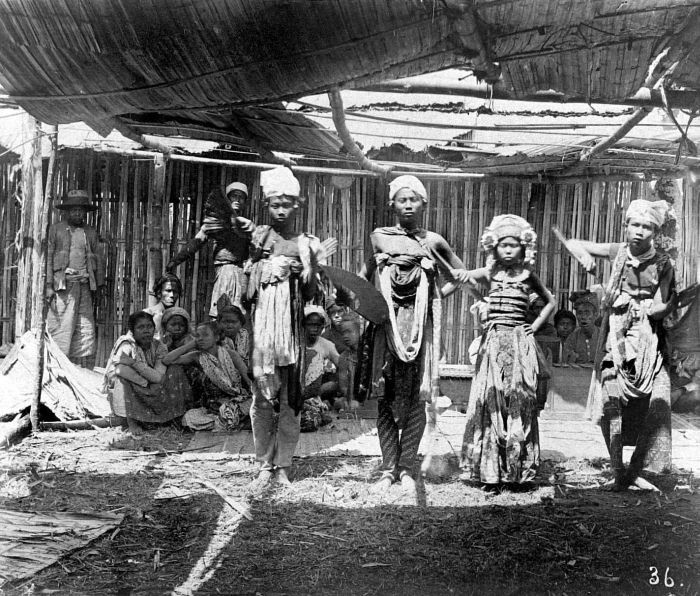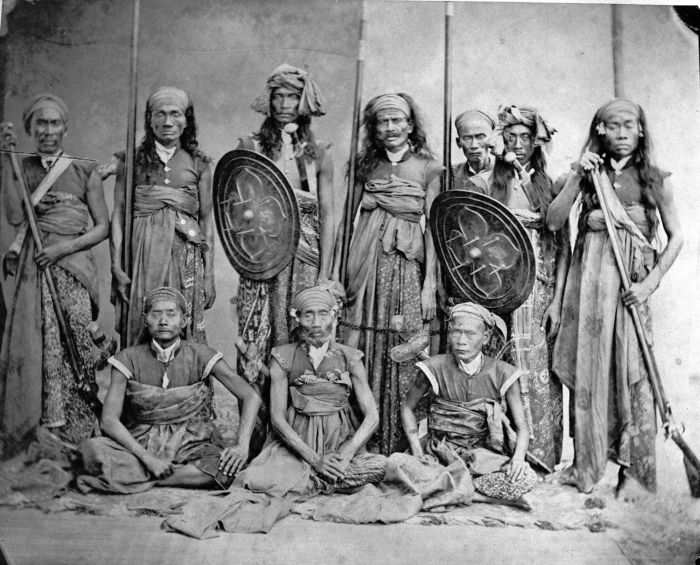|
Pujungan Inscription
A Pujungan Inscription, also called Bronze Tongtong Inscription, is a short inscription written on a copper slit drum (Bali: ''tongtong, kulkul''), which was found in the village of Pujungan in Pupuan District, Tabanan Regency, Bali, Indonesia. This inscription is thought to have been written during the reign of King Anak Wungsu in the 11th century. This is the first inscription that mentions the name ''Sasak'', the name of the indigenous people of Lombok island Lombok is an island in West Nusa Tenggara province, Indonesia. It forms part of the chain of the Lesser Sunda Islands, with the Lombok Strait separating it from Bali to the west and the Alas Strait between it and Sumbawa to the east. It is roug .... Philologist J.G. de Casparis examined the inscription, which read: ''Sasakdhana prihhan srih jayannira'' which he interpreted as: "This object is a gift from (a) Sasak, (for) the commemoration of his victory." Currently, the inscription is stored in Pujungan Temple. Refe ... [...More Info...] [...Related Items...] OR: [Wikipedia] [Google] [Baidu] |
Slit Drum
A slit drum or slit gong is a hollow percussion instrument. In spite of the name, it is not a true drum but an idiophone, usually carved or constructed from bamboo or wood into a box with one or more slits in the top. Most slit drums have one slit, though two and three slits (cut into the shape of an "H") occur. If the resultant tongues are different width or thicknesses, the drum will produce two different pitches. It is used throughout Africa, Southeast Asia, and Oceania. In Africa such drums, strategically situated for optimal acoustic transmission (e.g., along a river or valley), have been used for long-distance communication. The ends of a slit drum are closed so that the shell becomes the resonating chamber for the sound vibrations created when the tongues are struck, usually with a mallet. The resonating chamber increases the volume of the sound produced by the tongue and presents the sound through an open port. If the resonating chamber is the correct size for the pitch b ... [...More Info...] [...Related Items...] OR: [Wikipedia] [Google] [Baidu] |
Balinese Language
Balinese is a Malayo-Polynesian language spoken by 3.3 million people () on the Indonesian island of Bali as well as Northern Nusa Penida, Western Lombok, Eastern Java, Southern Sumatra, and Sulawesi. Most Balinese speakers also know Indonesian. The Bali Cultural Agency estimated in 2011 that the number of people still using the Balinese language in their daily lives on the Bali Island is under 1 million. The language has been classified as "not endangered" by '' Glottolog''. The higher registers of the language borrow extensively from Javanese: an old form of classical Javanese, Kawi, is used in Bali as a religious and ceremonial language. Classification Balinese is an Austronesian language belonging to the Malayo-Polynesian branch of the family. Within Malayo-Polynesian, it is part of the Bali–Sasak–Sumbawa subgroup. Internally, Balinese has three distinct varieties; Highland Bali, Lowland Bali and Nusa Penida. Demographics According to the 2000 census, ... [...More Info...] [...Related Items...] OR: [Wikipedia] [Google] [Baidu] |
Tabanan Regency
Tabanan is one of the regencies (''kabupaten'') in Bali, Indonesia. Relatively underdeveloped (compared with Badung and Denpasar to the east), Tabanan Regency has an area of 1,013.88 km2 and had a population of 386,850 in 2000, rising to 420,913 in 2010, then 461,630 at the 2020 census. Its regency seat is the town of Tabanan. One of the popular tourism attractions located in Tabanan is Tanah Lot. Administrative districts The regency is divided into ten districts (''kecamatan''), tabulated below with their areas and population totals at the 2010 census and the 2020 census. The table also includes the number of administrative villages (rural ''desa'' and urban ''kelurahan'') in each district and its postal codes. The administrative centre of Selemadeg District is at Bajera, that of Selemadeg Timur is at Megati, and that of Selemadeg Barat is at Antosari; the other districts share the same name as their administrative centre. Jatiluwih Jatiluwih village in Penebel Distri ... [...More Info...] [...Related Items...] OR: [Wikipedia] [Google] [Baidu] |
Bali
Bali () is a province of Indonesia and the westernmost of the Lesser Sunda Islands. East of Java and west of Lombok, the province includes the island of Bali and a few smaller neighbouring islands, notably Nusa Penida, Nusa Lembongan, and Nusa Ceningan to the southeast. The provincial capital, Denpasar, is the most populous city in the Lesser Sunda Islands and the second-largest, after Makassar, in Eastern Indonesia. The upland town of Ubud in Greater Denpasar is considered Bali's cultural centre. The province is Indonesia's main tourist destination, with a significant rise in tourism since the 1980s. Tourism-related business makes up 80% of its economy. Bali is the only Hindu-majority province in Indonesia, with 86.9% of the population adhering to Balinese Hinduism. It is renowned for its highly developed arts, including traditional and modern dance, sculpture, painting, leather, metalworking, and music. The Indonesian International Film Festival is held every year in Bal ... [...More Info...] [...Related Items...] OR: [Wikipedia] [Google] [Baidu] |
Indonesia
Indonesia, officially the Republic of Indonesia, is a country in Southeast Asia and Oceania between the Indian and Pacific oceans. It consists of over 17,000 islands, including Sumatra, Java, Sulawesi, and parts of Borneo and New Guinea. Indonesia is the world's largest archipelagic state and the 14th-largest country by area, at . With over 275 million people, Indonesia is the world's fourth-most populous country and the most populous Muslim-majority country. Java, the world's most populous island, is home to more than half of the country's population. Indonesia is a presidential republic with an elected legislature. It has 38 provinces, of which nine have special status. The country's capital, Jakarta, is the world's second-most populous urban area. Indonesia shares land borders with Papua New Guinea, East Timor, and the eastern part of Malaysia, as well as maritime borders with Singapore, Vietnam, Thailand, the Philippines, Australia, Palau, and India ... [...More Info...] [...Related Items...] OR: [Wikipedia] [Google] [Baidu] |
Anak Wungsu
Anak Wungsu was the youngest brother of Airlangga, who succeeded him as the ruler of Bali and Java Java (; id, Jawa, ; jv, ꦗꦮ; su, ) is one of the Greater Sunda Islands in Indonesia. It is bordered by the Indian Ocean to the south and the Java Sea to the north. With a population of 151.6 million people, Java is the world's List .... See also * Pujungan Inscription References *Pringle,Robert. (2004) ''A Short History of Bali: Indonesia's Hindu Realm''. Crows Nest, NSW: Allan & Unwin . Indonesian Hindu monarchs 11th-century Indonesian people {{hindu-bio-stub ... [...More Info...] [...Related Items...] OR: [Wikipedia] [Google] [Baidu] |
Sasak People
The Sasak people live mainly on the island of Lombok, Indonesia, numbering around 3.6 million (85% of Lombok's population). They are related to the Balinese people, Balinese in language and ancestry, although the Sasak are predominantly Muslim while the Balinese are predominantly Hindu. Sasak people who practice pre-Islamic beliefs are also known as Sasak Boda in reference to the name of the Sasak people's original religion, Bodha. Etymology There is a possibility that the origin of the name ''Sasak'' came from the word ''sak-sak'', which means "boat". In the Nagarakretagama, the word ''Sasak'' is mentioned together as one with Lombok Island, namely ''Lombok Sasak Mirah Adhi''. According to local tradition, it is believed that the word ''Sasak'' came from ''sa'-saq'' which means "the one". Followed by the word ''Lombok'' which originates from the word ''Lomboq'', meaning "straight". Hence by combining the words together ''Sa'-saq Lombok'', it means "something that's straight". ... [...More Info...] [...Related Items...] OR: [Wikipedia] [Google] [Baidu] |
Lombok Island
Lombok is an island in West Nusa Tenggara province, Indonesia. It forms part of the chain of the Lesser Sunda Islands, with the Lombok Strait separating it from Bali to the west and the Alas Strait between it and Sumbawa to the east. It is roughly circular, with a "tail" (Sekotong Peninsula) to the southwest, about across and a total area of about including smaller offshore islands. The provincial capital and largest city on the island is Mataram (city), Mataram. Orang Lombok is some what similar in size and density, and shares some cultural heritage with the neighboring island of Bali to the west. However, it is administratively part of West Nusa Tenggara, along with the larger and more sparsely populated island of Sumbawa to the east. Lombok is surrounded by a number of smaller islands locally called Gili Islands, Gili. The island was home to some 3,168,692 Indonesians as recorded in the decennial 2010 censusBiro Pusat Statistik, Jakarta, 2011. and 3,758,631 in the 2020 Cen ... [...More Info...] [...Related Items...] OR: [Wikipedia] [Google] [Baidu] |
Johannes Gijsbertus De Casparis
Johannes Gijsbertus de Casparis (31 May 1916, Eemnes – 19 June 2002, Wassenaar) was a Dutch orientalist and indologist. Early years After attending Barlaeus Gymnasium in Amsterdam, De Casparis started piano study at the conservatory of Amsterdam. However, a year later, in 1934, he turned to classical languages with Russian as a minor at the University of Amsterdam. Barend Faddegon was teaching Sanskrit in Amsterdam and under his influence, de Casparis switched to Sanskrit. In 1935, the archaeologist Willem Frederik Stutterheim of the Oudheidkundige Dienst in Nederlandsch-Indië (Archaeological Service in the Netherlands Indies) gave a lecture at the University of Amsterdam at which time he advised de Casparis to transfer to Leiden to continue his studies because the Oudheidkundige Dienst was looking for an epigrapher to replace Roelof Goris. Accordingly, de Casparis registered for Indology at the University of Leiden in 1936. He excelled as a student and quickly passed his exami ... [...More Info...] [...Related Items...] OR: [Wikipedia] [Google] [Baidu] |
11th-century Inscriptions
The 11th century is the period from 1001 ( MI) through 1100 ( MC) in accordance with the Julian calendar, and the 1st century of the 2nd millennium. In the history of Europe, this period is considered the early part of the High Middle Ages. There was, after a brief ascendancy, a sudden decline of Byzantine power and a rise of Norman domination over much of Europe, along with the prominent role in Europe of notably influential popes. Christendom experienced a formal schism in this century which had been developing over previous centuries between the Latin West and Byzantine East, causing a split in its two largest denominations to this day: Roman Catholicism and Eastern Orthodoxy. In Song dynasty China and the classical Islamic world, this century marked the high point for both classical Chinese civilization, science and technology, and classical Islamic science, philosophy, technology and literature. Rival political factions at the Song dynasty court created strife amongs ... [...More Info...] [...Related Items...] OR: [Wikipedia] [Google] [Baidu] |
History Of Bali
The History of Bali covers a period from the Paleolithic to the present, and is characterized by migrations of people and cultures from other parts of Asia. In the 16th century, the history of Bali started to be marked by Western influence with the arrival of Europeans, to become, after a long and difficult colonial period under the Dutch, an example of the preservation of traditional cultures and a key tourist destination. Geological formation The island of Bali, like most of the islands of the Indonesian archipelago, is the result of the tectonic subduction of the Indo-Australian plate under the Eurasian plate. The tertiary ocean floor, made of ancient marine deposits including accumulation of coral reefs, was lifted above the sea level by the subduction. Layers of Tertiary limestone lifted from the ocean floor are still visible in areas such as the Bukit peninsula with the huge limestone cliffs of Uluwatu, or in the northwest of the island at Prapat Agung. The local deformatio ... [...More Info...] [...Related Items...] OR: [Wikipedia] [Google] [Baidu] |





